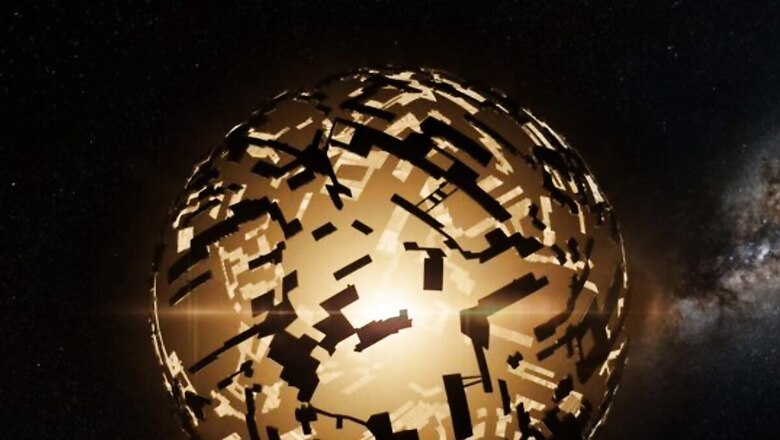
views
Do aliens exist? Extraterrestrial life might not have been discovered, but the debate has continued for decades as scientists are trying to find an answer to one of the most profound questions ever. In another conversation around this question, it seems like some evidence has been discovered to prove the existence of alien life, in the form of gigantic Dyson spheres. Inspired by the name of the British-American theoretical physicist Freeman Dyson, these are theoretical mega-engineering structures that encircle a star, providing an area for habitation and the ability to capture every bit of solar radiation.
However, with such objects at play, they are also expected to give out a detectable infrared glow called a technosignature. With that said, scientists believe they may have discovered signs of excess heat.
In collaboration with Project Hephaistos, research has been led by a team of astronomers from Uppsala University, Sweden, and the International School for Advanced Studies, Italy by combining data from ESA’s Gaia satellite, the 2MASS sky survey, and Nasa’s Wise Satellite to seek signatures of extraterrestrial technology rather than direct signals.
The study suggests that these Dyson Spheres “may be hiding in public data already collected as part of a large astronomical survey.”
“This structure would emit waste heat in the form of mid-infrared radiation that, in addition to the level of completion of the structure, would depend on its effective temperature,” the researchers wrote, as quoted by LadBible.
PhD student Matias Suazo, who led the study, managed to bring down the five million potential stars to seven possibilities. He spotted strange signals from seven red dwarfs within 900 light-years of Earth, stating that they appeared 60 times brighter in infrared than expected. “The most fascinating explanation could be actual Dyson spheres,” Suazo said.
In another study from the International School for Advanced Studies, the researchers found a broader range with 53 such stars, including sun-like ones, at distances of up to 6.500 light-years from Earth.
While the project’s results sound promising, identifying potential Dyson spheres, scientists will need to take a closer look at the candidates to distinguish between natural and artificial causes.
Earlier in 2022, a professor of astronomy and physics at the University of California also co-authored a study, claiming that alien life might exist on Dyson spheres circling the white dwarf stars in the Milky Way. “If any Dyson spheres do exist, they will likely be hard to find because there are so many stars that must be searched. The signal from the Dyson sphere will likely be very faint compared to the star about which it orbits,” Zuckerman said, in an email to Live Science.
















Comments
0 comment